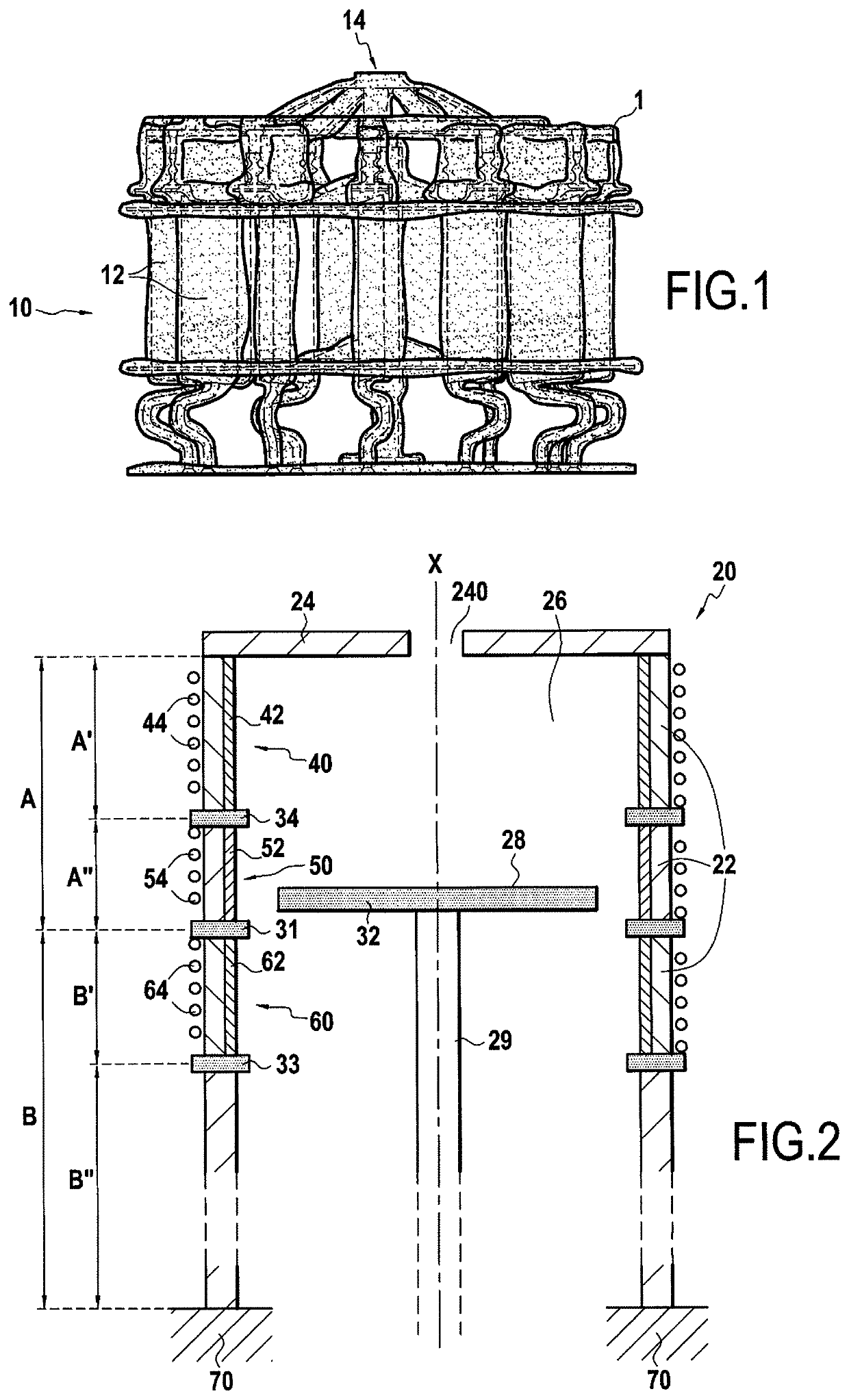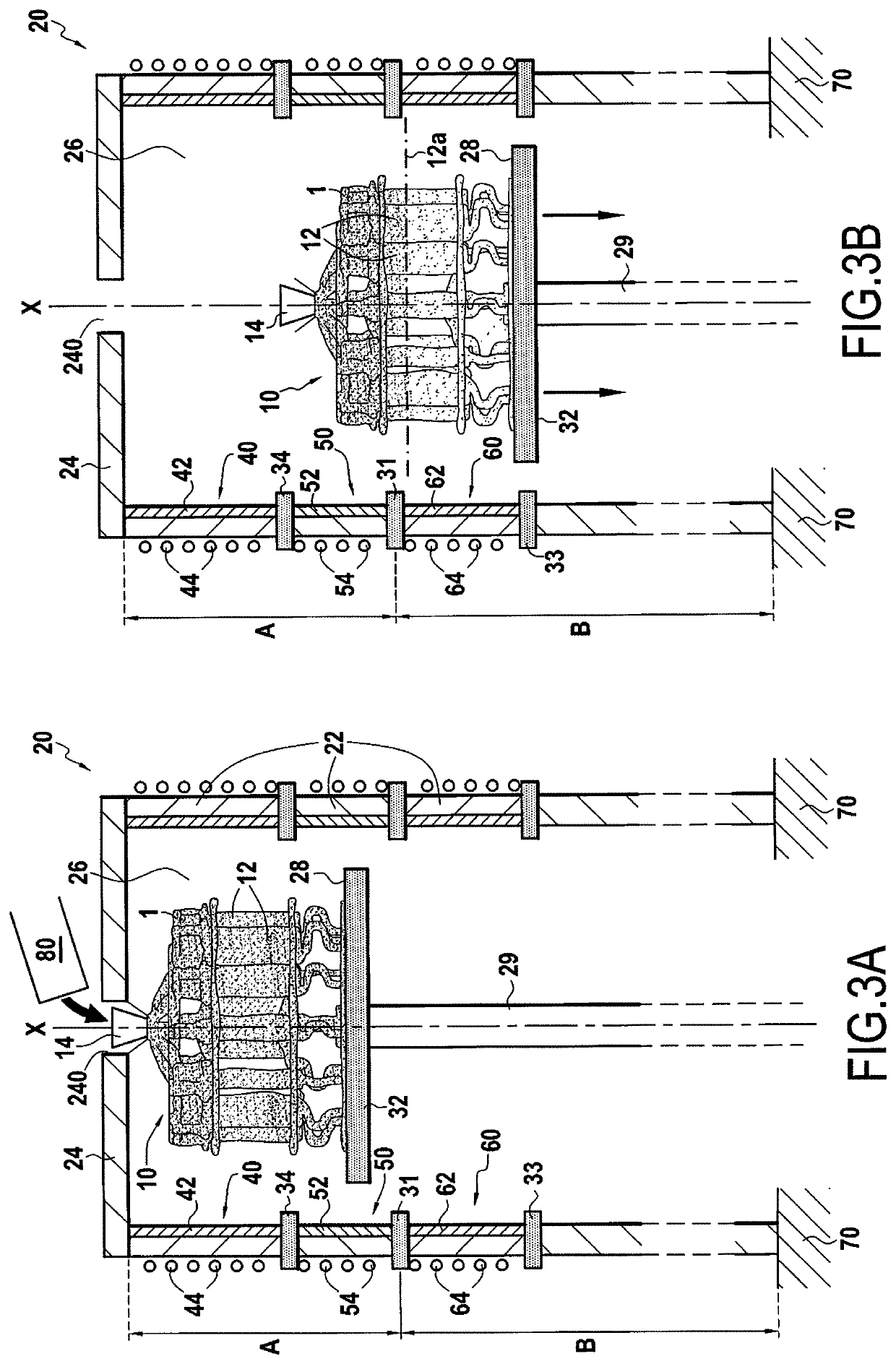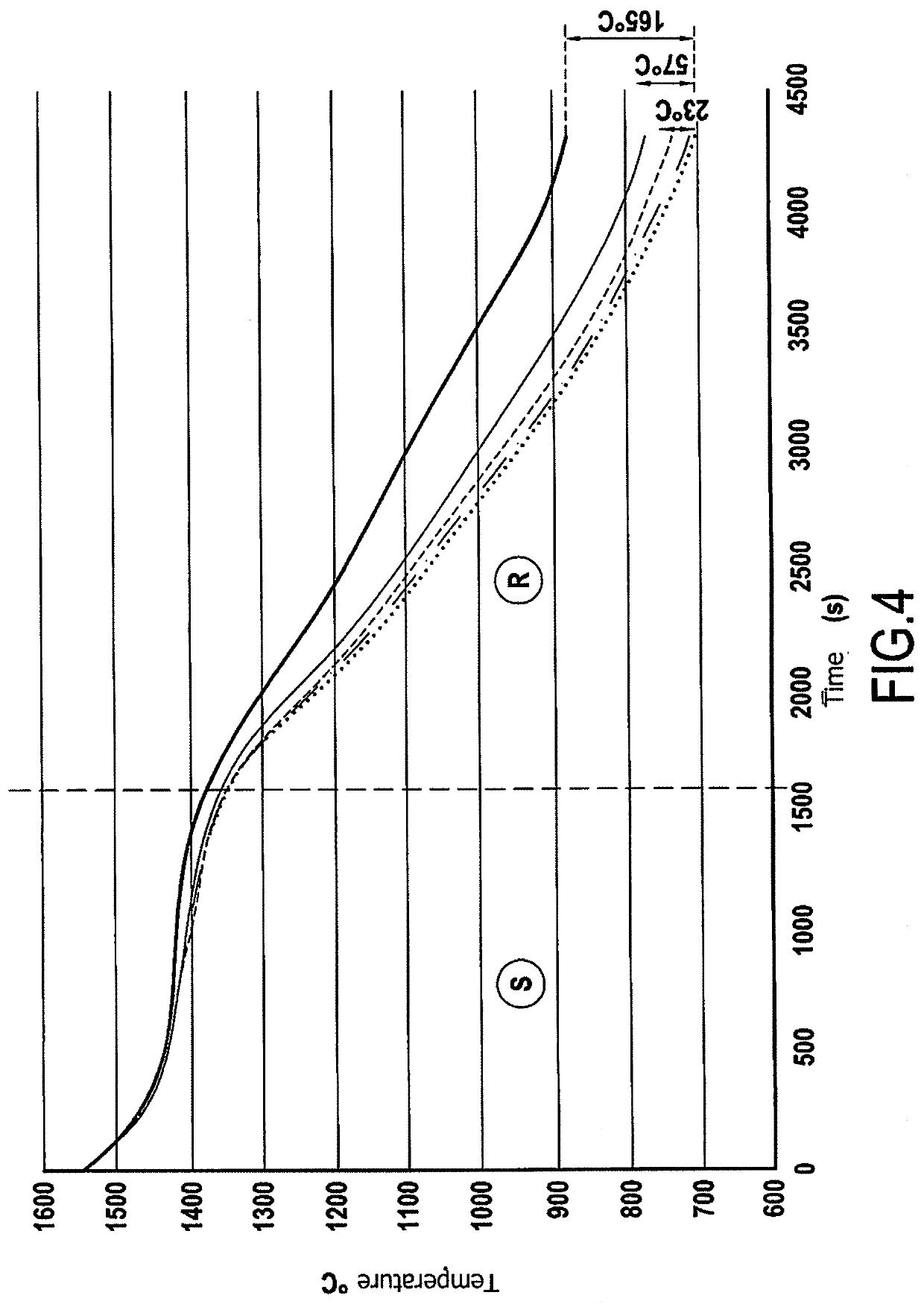Directional solidification cooling furnace and cooling process using such a furnace
a solidification cooling furnace and cooling process technology, applied in the field of casting parts cooling, can solve the problems of parts with distortion and torsion of thermomechanical stresses, final parts with weak zones, etc., and achieve the effects of limiting thermomechanical stresses and plastic deformation in metal, regulating more accurately, and limiting thermomechanical stresses and plastic deformation
- Summary
- Abstract
- Description
- Claims
- Application Information
AI Technical Summary
Benefits of technology
Problems solved by technology
Method used
Image
Examples
Embodiment Construction
[0058]An example furnace 20 of the present disclosure and an example cooling method by directional solidification for use with blades made by casting are described below with reference to FIGS. 1 to 5.
[0059]Blades are fabricated by a casting method. A first step in this casting method consists in fabricating a model of the blades and in grouping together a plurality of models so as to form a cluster enabling a mold to be fabricated, as described in the following step.
[0060]In a second step, a shell mold 1 is fabricated from the wax cluster.
[0061]The last operation of the second step consists in eliminating the wax of the cluster model from the shell mold 1. Wax is eliminated by raising the shell mold 1 to a temperature higher than the melting temperature of the wax.
[0062]In a third step, a cluster 10 of blades 12 (FIG. 1) is formed in the shell mold 1 by casting molten metal into the shell mold 1. Molten metal is cast into the shell mold 1 from the top portion of the mold, referred ...
PUM
| Property | Measurement | Unit |
|---|---|---|
| diameter | aaaaa | aaaaa |
| temperature | aaaaa | aaaaa |
| temperature | aaaaa | aaaaa |
Abstract
Description
Claims
Application Information
 Login to View More
Login to View More - R&D
- Intellectual Property
- Life Sciences
- Materials
- Tech Scout
- Unparalleled Data Quality
- Higher Quality Content
- 60% Fewer Hallucinations
Browse by: Latest US Patents, China's latest patents, Technical Efficacy Thesaurus, Application Domain, Technology Topic, Popular Technical Reports.
© 2025 PatSnap. All rights reserved.Legal|Privacy policy|Modern Slavery Act Transparency Statement|Sitemap|About US| Contact US: help@patsnap.com



